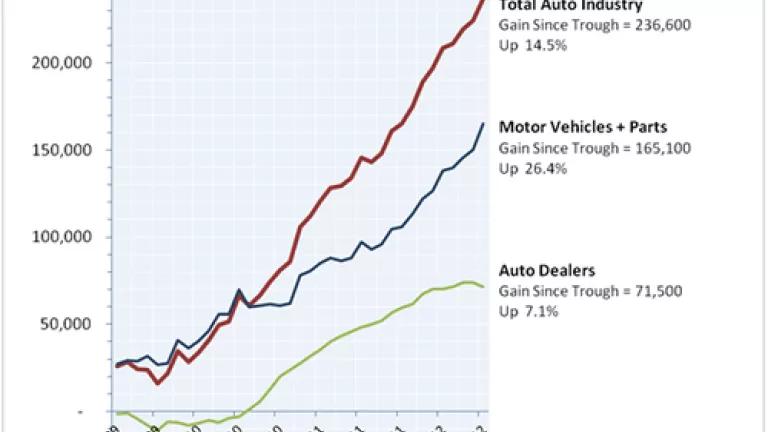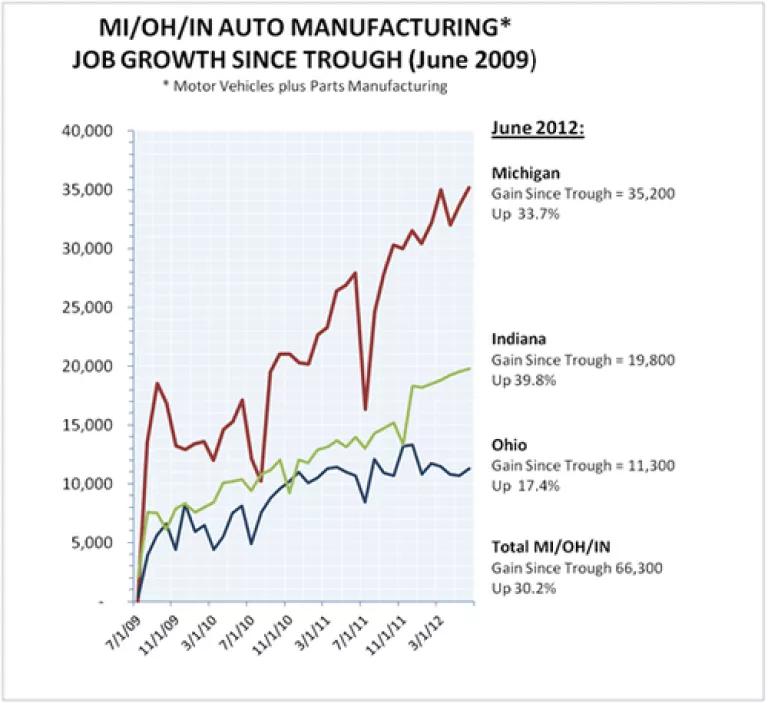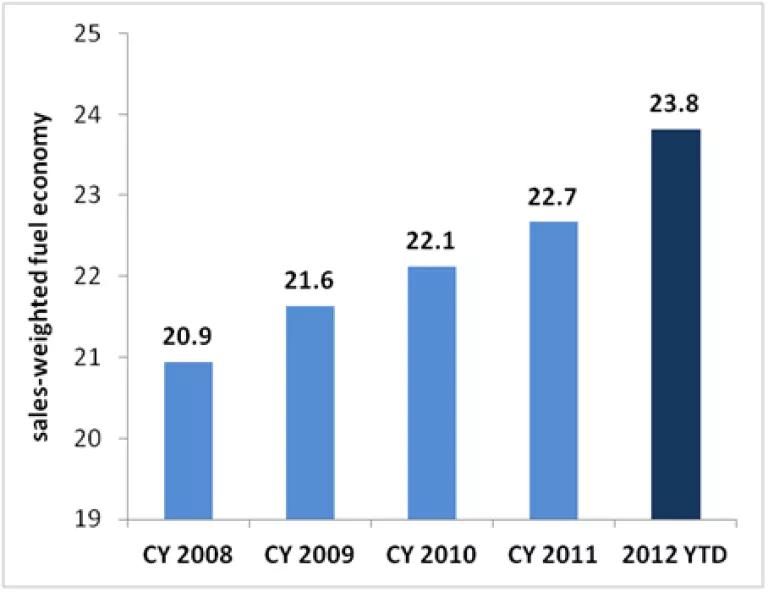
A review of the latest government jobs data reveals an indisputable fact: the U.S. auto industry is making a remarkable recovery. While not the only reason, as our new report demonstrates, there is also little doubt that higher fuel efficiency is playing a critical role in the auto industry’s revitalization.
Since June 2009, when the auto industry hit bottom, the U.S. auto industry has grown by 236,600 jobs. Manufacturing of motor vehicles and parts has grown by 165,100 jobs, or 26.4 percent, easily outpacing the recovery of the economy as a whole (see Chart 1 below). Recovery is so strong in three largest auto states, Michigan, Ohio, and Indiana, that auto jobs directly accounts for an astounding 38 percent of the total jobs added in those states, or 66,300 jobs, since the auto industry hit bottom in June 2009 (see Chart 2 below).
Vehicle sales are up greatly year-over-year (see chart 3 below), and it is sales of fuel efficient vehicles that are driving overall sales growth as consumers rank fuel efficiency as their top priority in seeking a new vehicle. In fact, the first half of 2012 set an all-time fuel efficiency record for new passenger vehicles sold in the U.S. at 23.8 mpg (see chart 4 below).
But unlike other periods of high fuel prices, consumers aren’t forced to purchase smaller vehicles to get higher fuel economy. Mainstream passenger sedans are getting to be more efficient than ever before as automakers compete to claim the “most efficient” title for that segment, and consumers and autoworkers win every time.
The fuel economy imperative is powering investments and job growth in the three largest auto states, Michigan, Ohio, and Indiana (see chart 4 below). As mentioned above, 66,300 jobs have been added since the auto industry hit bottom in June 2009.
Automakers and suppliers are adding shifts to keep up with demand for the popular Chevy Cruze in Ohio and gearing up to build hot-selling hybrids in Indiana. Meanwhile, Michiganders are building Chevy Volts and Sonics while the state becomes a hotbed of electric vehicle and battery technology innovation.
In addition, there are many more indirect jobs the industry also supports that are creating opportunities for workers, companies and communities. Auto industry economists estimate that there are about four additional jobs created for each auto manufacturing job added, a calculation that is well-dramatized by a Bloomberg News report about how building the new fuel-efficient Dodge Dart is revitalizing a city in Illinois. When first, second and third shifts are added to produce vehicles or parts at a manufacturing plant, the benefits reverberate throughout the local community in jobs, local tax revenues, and indirect economic activity.
The Obama Administration’s new National Program, to be released as early as next week, sets carbon pollution fuel efficiency standards for automakers to reach the equivalent of 54.5 mpg by 2025. Broadly supported by the auto industry, environmentalists, and other stakeholders, the National Program provides the regulatory certainty automakers and their suppliers need in order to make investments toward the even greater fuel efficiency necessary for the U.S. auto industry to be globally competitive.
The dividends from the investments to meet the first round of 2012 to 206 standards are already being seen in the form of jobs created, factories reopened and expanded, and communities reinvigorated. I invite you to read our latest report, “How Fuel Efficiency is Driving Growth in the U.S. Auto Industry” to find out more and visit our website DrivingGrowth.org for the latest data and stories.
CHART 1: 236,600 Auto Jobs Added Since June 2009



